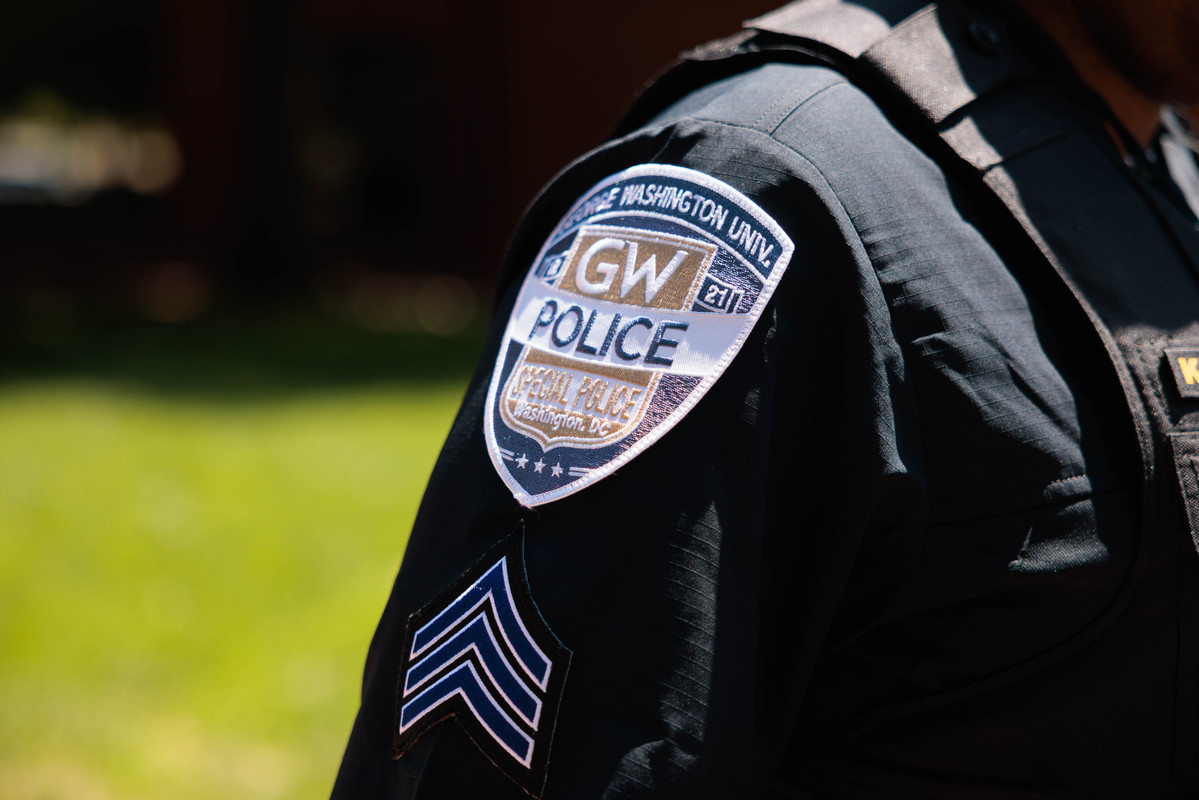The final group of George Washington University Police Department supervisory officers has completed its training and certification requirements, concluding the university’s arming implementation process.
The process, which has taken place in phases over the past year to allow for continuous community engagement and feedback, expanded the university’s ability to respond to life-threatening emergencies on campus. With the arming process now fully implemented, 22 supervisory officers, or about a third of the force, will be armed when all supervisor vacancies are filled.
The university does not plan to arm non-supervisory officers, who comprise the majority of the force and are the most likely to interact with GW community members on a daily basis.
In recent weeks, the university also has convened the new Campus Safety Advisory Committee, which was envisioned in the arming implementation plan thanks to community feedback. The committee includes students, faculty, staff, and neighbor representatives and works to increase the GW community’s awareness of and engagement on campus safety. The committee is meeting regularly this year to collaboratively develop, define and share its concept of campus safety and provide a brief annual report with recommendations.
The university sought input from the community about the composition, scope and charge of the committee, and members were selected through an open nomination and application process. Community members can provide input to the committee by contacting the chair or a committee member.
Throughout the arming implementation phases, the university solicited feedback on its planning from students, faculty, staff, neighbors and other stakeholders. GW leaders held community forums to answer questions and reviewed comments submitted through a feedback portal. This helped the university in updating GWPD policies and training requirements, which include implicit bias, mental health response, firearms, de-escalation and response protocol training.
The use of de-escalation is especially critical for officers, and GWPD’s training is a comprehensive program that includes a mix of classroom learning covering the principles of de-escalation, such as communication and conflict resolution, and hands-on scenarios, which involve virtual simulations where officers use de-escalation techniques in realistic, difficult situations.
Among the response protocols officers review pertains to responding to an incident in a residence hall. Most calls to GWPD regarding incidents in student housing are first assessed by a member of the residence life staff, who determines whether GWPD needs to enter the building. If an officer is needed, unless there is a threat of violence or an immediate safety issue, the responding officer from GWPD is generally not armed.
Another safeguard developed in the arming implementation process was an Independent Review Committee to provide additional oversight of GWPD. The committee is charged with reviewing any GWPD supervisory officer’s use of force involving a firearm while on duty to assess whether the use was consistent with the Use of Force Policy as well as producing a publicly available annual report summarizing the committee’s work and including any recommendations it may have for GWPD policy or procedure changes based on the committee’s review of any incidents involving use of force with a firearm.
In addition, during the arming implementation planning, the university made broader public safety enhancements based on feedback from the community, including improvements to mental health concerns response, building security reviews, active shooter response training and review and testing of the emergency notification systems.





